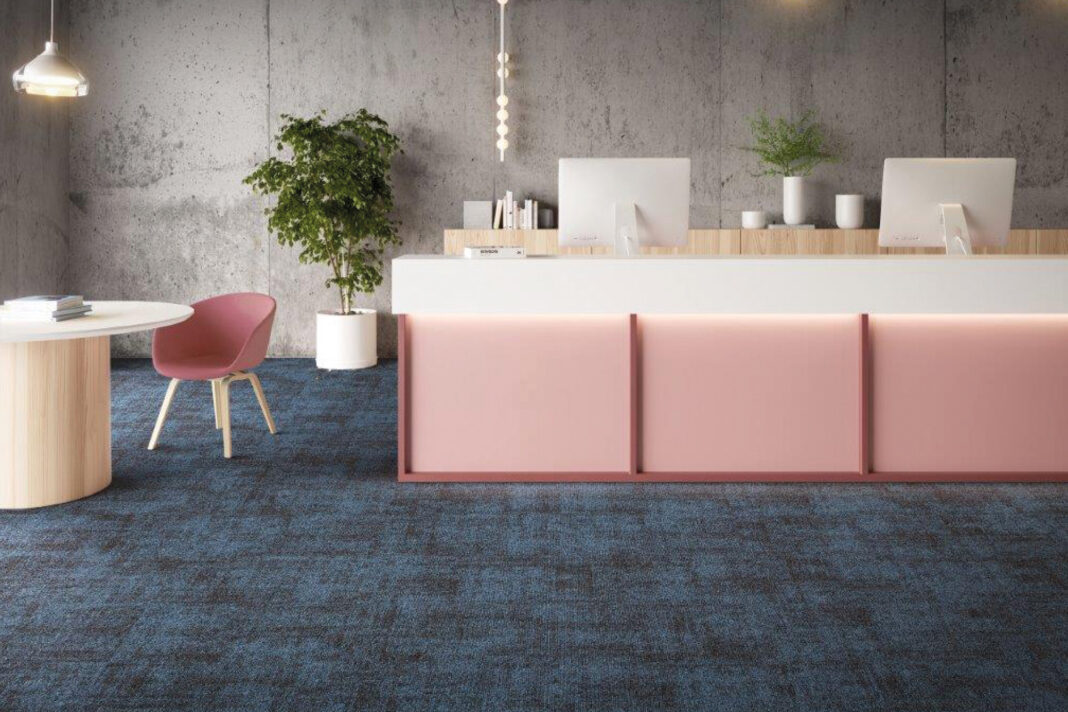For too long, modern society has operated on a ‘take, make, waste’ basis, leading to the depletion of natural resources, large scale pollution, and contributing towards the climate crisis. It’s widely recognised that this model is not sustainable, and that we need to move towards a more circular economy. Carpet waste is a prime example of this, with Carpet Recycling UK reporting that businesses and households throw away 40,000 tonnes of carpet each year in the UK – enough to cover an area the size of Birmingham.
What is a circular economy?
True circularity is rarely feasible, as products often use many different elements, making it extremely difficult to fully recycle all the materials involved. So, what circularity means in practice is thinking differently about the design and manufacture of products – keeping resources in circulation for as long as possible through repair and reuse, and either up-cycling, down-cycling, or recycling of materials at end-of-life.
Another important element is to include recycled content in the manufacture of new products where feasible, provided the process doesn’t itself cause a more negative impact than using purely new materials.
The EU has produced a Circular Economy Package (CEP), which sets out six key principles to support the transition towards a more circular economy.
These include:
- Resource efficiency
- Responsible use of raw materials to avoid depletion
- Transparent information for consumers to help them make greener choices
- Eco-innovation
- Promoting and supporting greener companies and products
- Reducing waste and better waste management.
How can carpet tiles help with circularity?
Using carpet tiles, particularly in commercial settings or areas such as schools, can be a first step towards keeping products in circulation for as long as possible. One of the great advantages of tiles rather than runs of carpet is that individual tiles can easily be replaced if they get badly stained or damaged, without needing to change the whole carpeted area.
It’s also easy to reuse or repurpose undamaged tiles if they are being switched for aesthetic reasons, with the potential to donate them to places such as charities or shelters, rather than sending them to landfill. Again, the flexibility of tiles makes this far more feasible to do successfully and with less waste than it would be with runs of carpet that have been cut to a particular size and shape.
Making a difference with manufacturing
As part of the push towards achieving a more circular economy, Joseph, Hamilton, and Seaton (JHS) says it’s proud to announce the launch of four commercial carpet tile products with enhanced recycled content.
Says the company: ‘The Wave Length, Overlay and Outline ranges all contain 50% overall recycled content. Manufactured using 100% PA6 Solution Dyed Nylon yarn, these options provide integral colour combined with the chemical resistance, excellent abrasion resistance, strength, and durability that is associated with this proven polyamide material.
‘The secondary backings are manufactured using ‘back2back’ waste from the tile cutting process – waste that is shredded and then added into the secondary backing, providing 10% post-industrial recycled content. The filler used in the backing is wholly sourced from a limestone mining waste stream, diverting this waste from landfill, and providing 100% post-industrial recycled content.’
JHS continues: ‘Wave Length is available in 11 different colours and offers a gradient-like barcode effect that would be at home in any commercial space. Overlay, also available in 11 colours presents a palette ranging from subtle tones of grey, beige, blue, and black, to bright and bold reds, yellows, oranges, and greens. Meanwhile, a combination of contrasting tones in 16 colourways creates a washed effect that balances out the pattern seen in Outline.
‘The innovative Colour Foundation Tile range achieves 64% overall recycled content. It utilises the same back2back waste process for the secondary backing, and the same recycled limestone waste product for the backing filler, but is manufactured using ECONYL Regenerated Solution Dyed Nylon yarn. Made wholly from post-industrial and post-consumer Polyamide 6 waste, Colour Foundation is available in 36 vibrant colours, ensuring exceptional versatility for this exciting new range.’
01827 831400
marketing@jhscarpets.co.uk
www.jhscarpets.com


